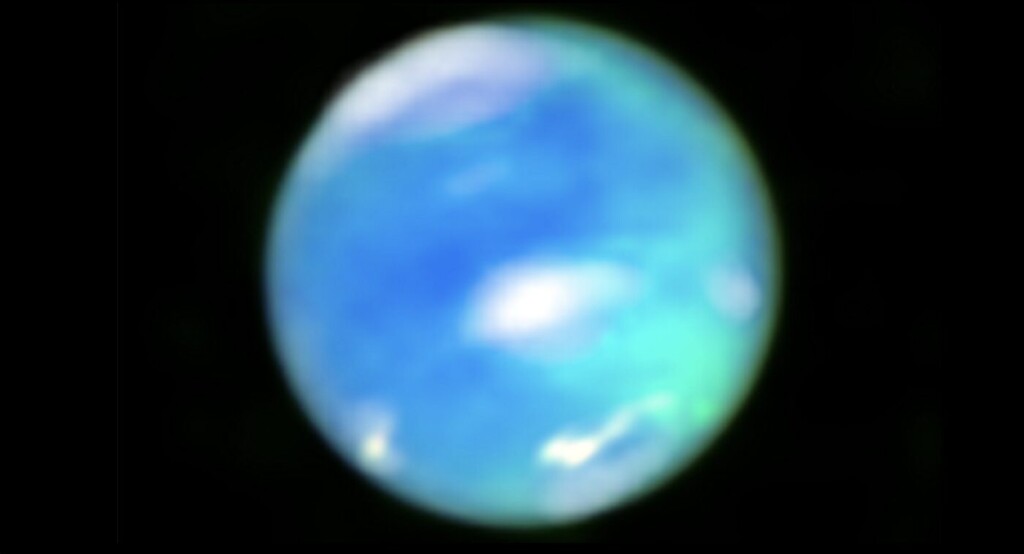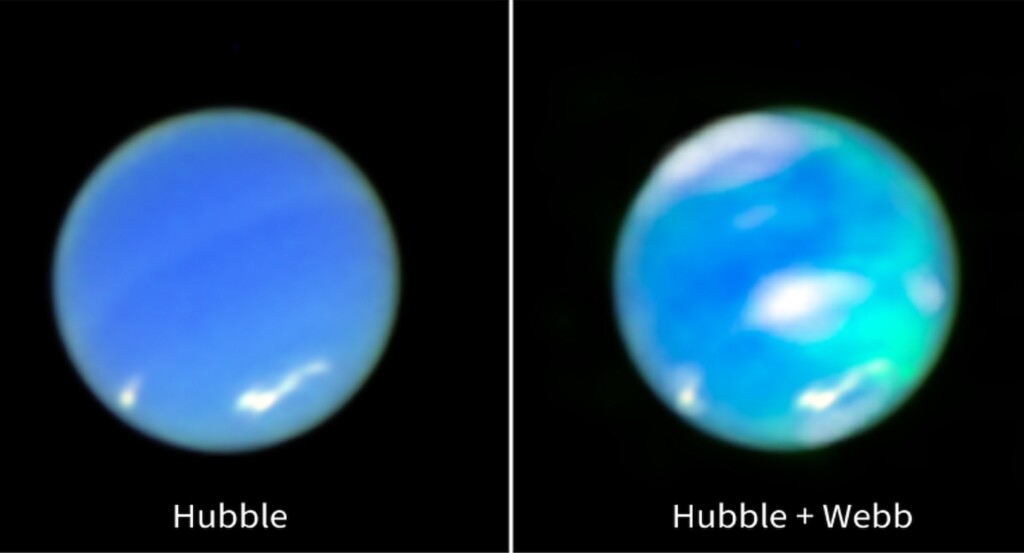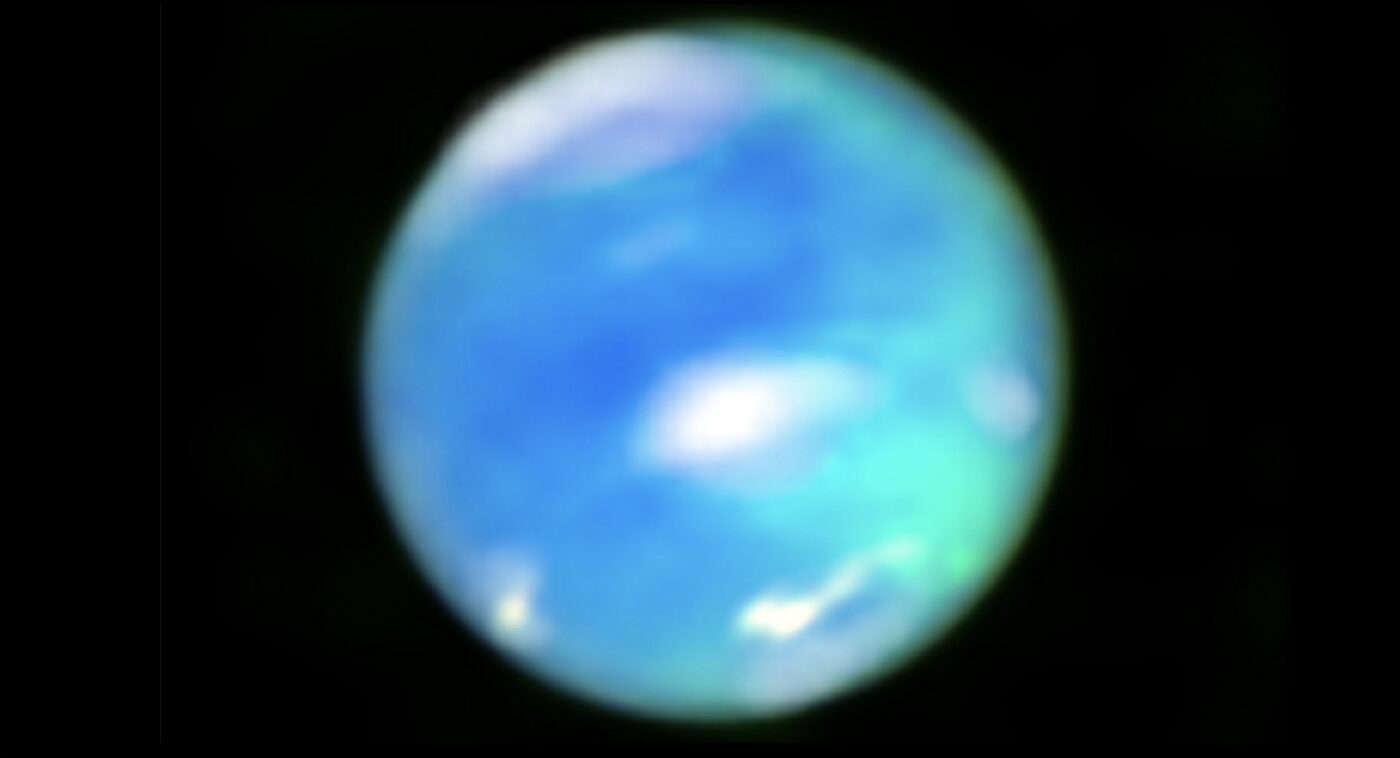
NASA’s Webb Space Telescope was finally able to capture bright auroras on Neptune—the most distant planet in our solar system.
“In the past, astronomers have seen tantalizing hints of auroral activity on Neptune, for example, in the flyby of NASA’s Voyager 2 in 1989,” said the space agency this week.
“However, imaging and confirming the auroras on Neptune has long evaded astronomers despite successful detections on Jupiter, Saturn, and Uranus.”
Auroras occur when energetic particles, often originating from the Sun, become trapped in a planet’s magnetic field and eventually strike the upper atmosphere. The energy released during these collisions creates the signature glow known on Earth as the Northern Lights.
Henrik Melin of Northumbria University, lead author of the paper published in Nature Astronomy, conducted the research while at the University of Leicester.
“It was so stunning to not just see the auroras, but the detail and clarity of the signature really shocked me.”
MORE AMAZING SPACE PICS: Mysterious Rainbow-like ‘Glory Lights’ Observed on Planet Outside Our Solar System for First Time Ever
Actually, imaging the auroral activity on Neptune was only possible with Webb’s near-infrared sensitivity.
The auroral activity seen on Neptune is also noticeably different from what we are accustomed to seeing here on Earth, or even Jupiter or Saturn. Instead of being confined to the planet’s northern and southern poles, Neptune’s auroras are located at the planet’s geographic mid-latitudes — think where South America is located on Earth.

This is due to the strange nature of Neptune’s magnetic field, originally discovered by Voyager 2 in 1989 which is tilted by 47 degrees from the planet’s rotation axis. Since auroral activity is based where the magnetic fields converge into the planet’s atmosphere, Neptune’s auroras are far from its rotational poles.
“This observatory has finally opened the window onto this last, previously hidden ionosphere of the giant planets,” said Leigh Fletcher of Leicester University and co-author of the paper.
“As we look ahead and dream of future missions to Uranus and Neptune, we now know how important it will be to have instruments tuned to the wavelengths of infrared light to continue to study the auroras.
But the study also revealed another mystery, as the team measured the temperature of the top of Neptune’s atmosphere for the first time since Voyager 2’s flyby.
“I was astonished — Neptune’s upper atmosphere has cooled by several hundreds of degrees,” Melin said. “In fact, the temperature in 2023 was just over half of that in 1989.”
Through the years, astronomers have predicted the intensity of Neptune’s auroras based on the temperature recorded by Voyager 2, and a substantially colder temperature would result in much fainter auroras. This cold temperature is likely the reason that Neptune’s auroras have remained undetected for so long. The dramatic cooling also suggests that this region of the atmosphere can change greatly even though the planet sits over 30 times farther from the Sun compared to Earth.
SEND THESE FAR OUT IMAGES To Space Lovers By Sharing on Social Media…




















